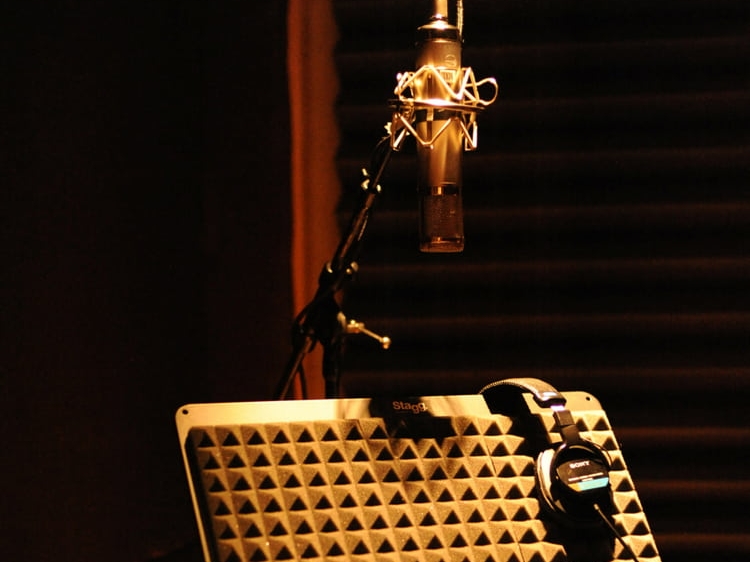
Do I Really Need a $1200 Dollar Microphone?
Tips on choosing the right mic for your podcast
No.
Here’s the verdict: Get as good a dynamic mic as you can afford and don’t spend a ton on sound proofing.
Caveat one: Given the website you’ve found yourself on, I am going to assume you are interested in building a small home studio to record your podcast.
Caveat two: I am also going to assume you are not interested in spending a fortune to install soundproofing such as floating floors, bass traps, and fiberglass clouds overhead.
Scroll to the end of the page to see our great dynamic mic picks, at varying price points. But keep in mind: this article is only about mics. Unless you get one of the USB compatible mics which plugs directly into your computer, you will need to get an audio interface to stick between the mic and computer. More on that another time.
If you want a more detailed explanation on how I arrived at the verdict, read on.
A Tale of Two Mics: Condenser vs. Dynamic
The two types of microphones you will most often come across are dynamic and condenser (not to be confused with USB mics, which can be either condenser or dynamic). For our purposes we will skip the technical differences between the two and focus on the practical advantages of each:
Dynamic Advantages:
-Dynamic mics are generally more rugged. You can drop them, throw them, even dent them and they will usually still function (we aren’t suggesting you do this, no matter how much you killed that interview).
-Dynamic mic pick up a smaller area of the room. For podcasting purposes, this is a great thing. More on that below.
-Traditionally, dynamic mics have been the choice for instruments that need a tighter frequency response, such as kick drums and amplifiers.
Condenser Advantages:
-Condenser microphones have long been considered better for studio vocal recording, providing a wider frequency response and superior reproduction of higher frequencies (though dynamic mics have closed this gap considerably over years.)
Condenser Disadvantages:
-Condenser microphones pick up a much wider area of the room. This is great for recording something like drums or guitar. Again, for our podcasting purposes, this is a disadvantage.
Price
I’m separating this from the advantages section, because there’s some nuance here. Conventional wisdom says you have to pay a little more to get a great dynamic mic for vocal recording. For example, say you have a $100 condenser mic and a $400 dynamic mic. They may both sound equally good on vocals. The big difference is the $400 dynamic is going to pick up much less undesirable sound. The $100 condenser mic is also going to pick up more ambient noise, fan noise, street noise, and the voices of other people who are being recorded in the same room (which will make editing harder).
This means you will have to do a decent job soundproofing the room to really get the best result from your condenser mic.
Now, there are some who might purchase the condenser and spend the $300 balance on soundproofing. The issue here is that while lower tier foam soundproofing (which can run anywhere from $20-$200) is great at stopping reflective walls and that “hallow echo” sound, they do very little to stop more intrusive sounds like the aforementioned fans, fridges, street noise, etc.
To truly soundproof a room enough to keep out undesired noise you’re looking at hundreds, maybe thousands of dollars if you want to really get serious.
Which leads back to the verdict: Get as good a dynamic mic as you can afford and don’t spend a ton on sound proofing. Some cheap foam on the wall behind you and a chair that isn’t made of reflective material like plastic or steel should be fine.
Suggested Mics
OK, here are some suggestions on actual dynamic mics to buy (and once again, unless you get one of the USB compatible mics, you will also need to get an audio interface to stick between the mic and the computer):
Shure SM7B (Lists for $400)
I usually tell podcasters to just buy this mic and maybe some $20-$40 foam to surround it and call it a day. This mic sounds as good as condensers that are twice the price. Close the amazon tab and don’t waste any more time searching.
Shure MV7 (Lists for $250)
Understandably, some don’t want to spend $400 for the SM7B. For a little less you can get a Shure MV7. It’s a bit brighter/harsher than the SM7B but it’s still a great sounding mic. It is also USB compatible, if that’s the direction you’re going with your studio.
Audio-Technica ATR2100X-USB (Lists for $99)
A very good XLR/USB mic. It won’t give you the strong booming low end proximity effect that the SM7B will, but it’s a good overall mic and great for its price range.
There you have it. These mics should provide you with a good to great sound. As always, remember to focus on the content of your podcast and don't get too bogged down in the tech. That said, be sure to check out our article on audio interfaces and USB/XLR mics.